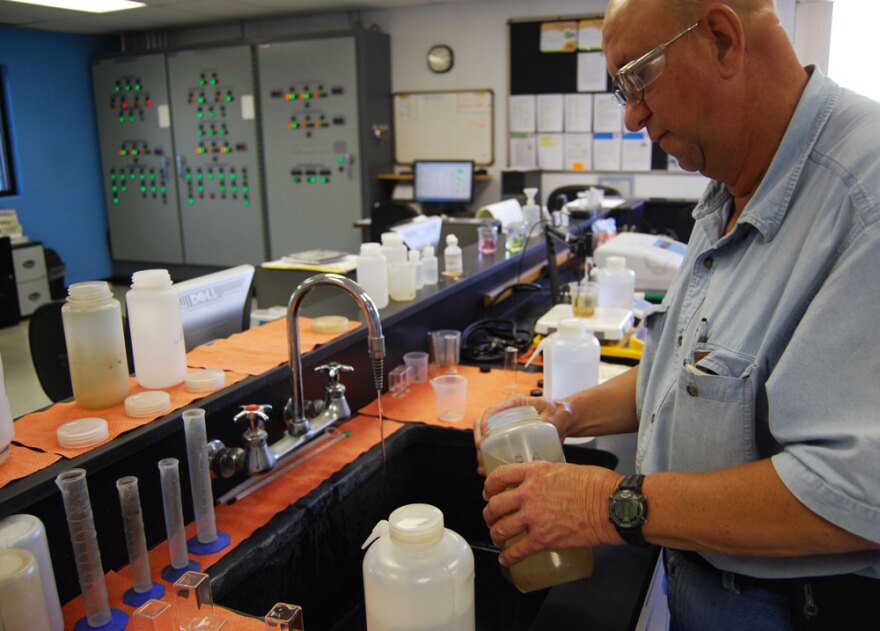Actually we think it's pretty ok. But some people can't stand it! CoMo Explained investigates with guest host AbbieFentressSwanson:
Here's something that never makes the news: Columbia's yearly consumer confidence report on water quality required by the EPA. If you live in Columbia you probably got one in your mailbox recently. It's a small, fairly boring document, but it's the key to why our water tastes and acts the way it does.
Columbia's drinking water starts deep underground in a southwest corner of Boone County called the McBaine Bottoms[map]. Ancient glaciers deposited sand and mud on the shores of the Missouri River, creating what we call an [alluvial aquifer]. The porous earth is thick with groundwater which is noticeably cleaner, but a lot harder (containing heavy minerals) than water on the surface. That means it's easier and cheaper to treat, keeping our water bills relatively low.
Groundwater loses a lot of oxygen and picks up minerals, so our treatment centers have to deal with that first. Aeration restores oxygen and helps to get rid of some of the iron and sulfur in the water. Too much iron can stain clothing in the wash and sulfur might leave a bad taste or a rotten odor. Then, the addition of "slaked lime" helps to soften the water, reducing minerals like calcium. Hard water will erode pipes, affect taste and make cleaning with soap difficult. A round of filtration helps to get out some more minerals and finally, a round of disinfection finishes the process up before the water heads to our taps.

Chloramine is the chemical of choice for disinfection. It's pretty similar to chlorine and some people use filters at home to get that stuff out. Brita, the company which makes those popular carafe filters, claims that the activated carbon in their filter cartridges can remove chloramine, heavy metals and some minerals from drinking water.
But be thankful that we don't typically have to use activated carbon in Columbia's treatment plants. As anybody that owns a home filter (and changes it regularly) knows, that activated carbon stuff is pricey.
On the podcast this week, Harvest Public Mediaagriculture reporter Abbie Fentress Swanson tells us about visiting a water treatment plant in Northeastern Missouri that spends $130,000 a year to remove the pesticide atrazine from drinking water. As Swanson reported recently for NPR, it's the ratepayers in the community who end up footing the bill.
Listen to the podcast via the play button above or subscribe to us on iTunes. And listen to Swanson eachweek on KBIA. She and her colleagues do a lot of fine work on the farm and food beat over at Harvest Public Media.
Thanks to Casey Morell for production help this week and a mighty hat tip to Reddit user mjxii and the /r/ColumbiaMo community for the idea.




